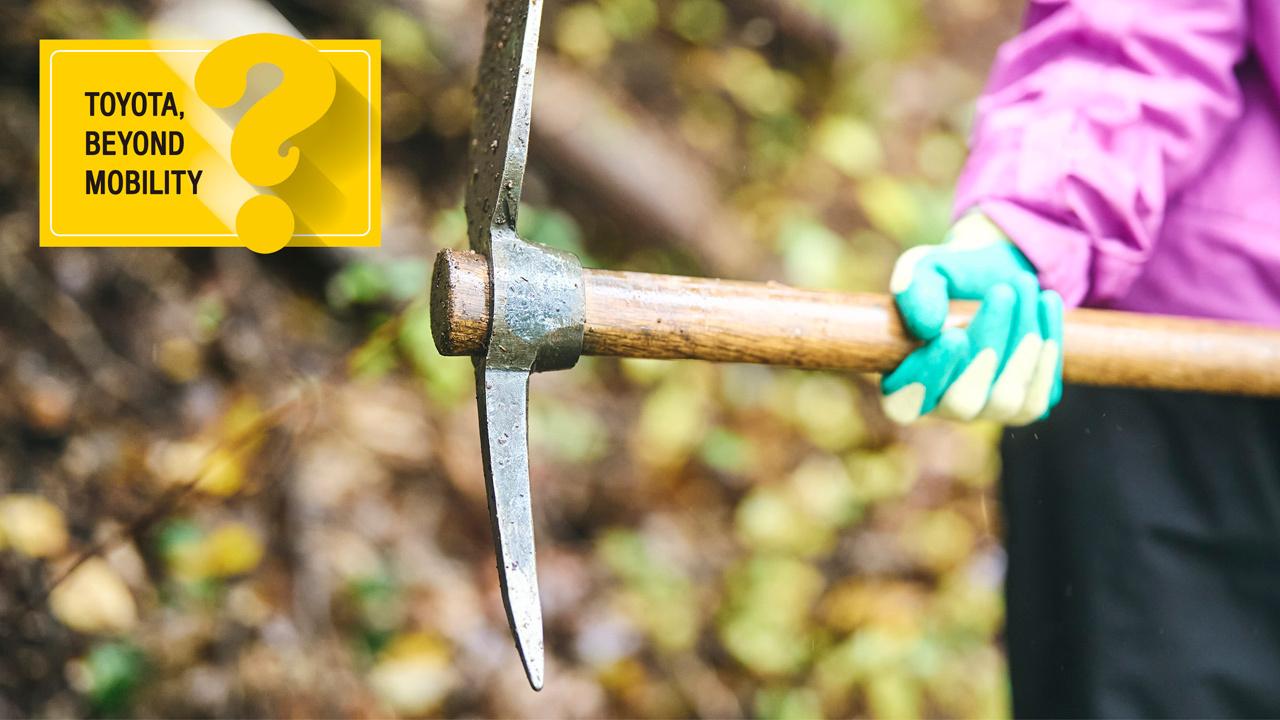
This series showcases Toyota's research in non-automotive fields. This time, we take a venture into the wild to a school in the forest!

In the rain, a group armed with picks ascends a steep mountain slope. What exactly is Toyota up to?
Paths untrodden: Discovering what lies beyond
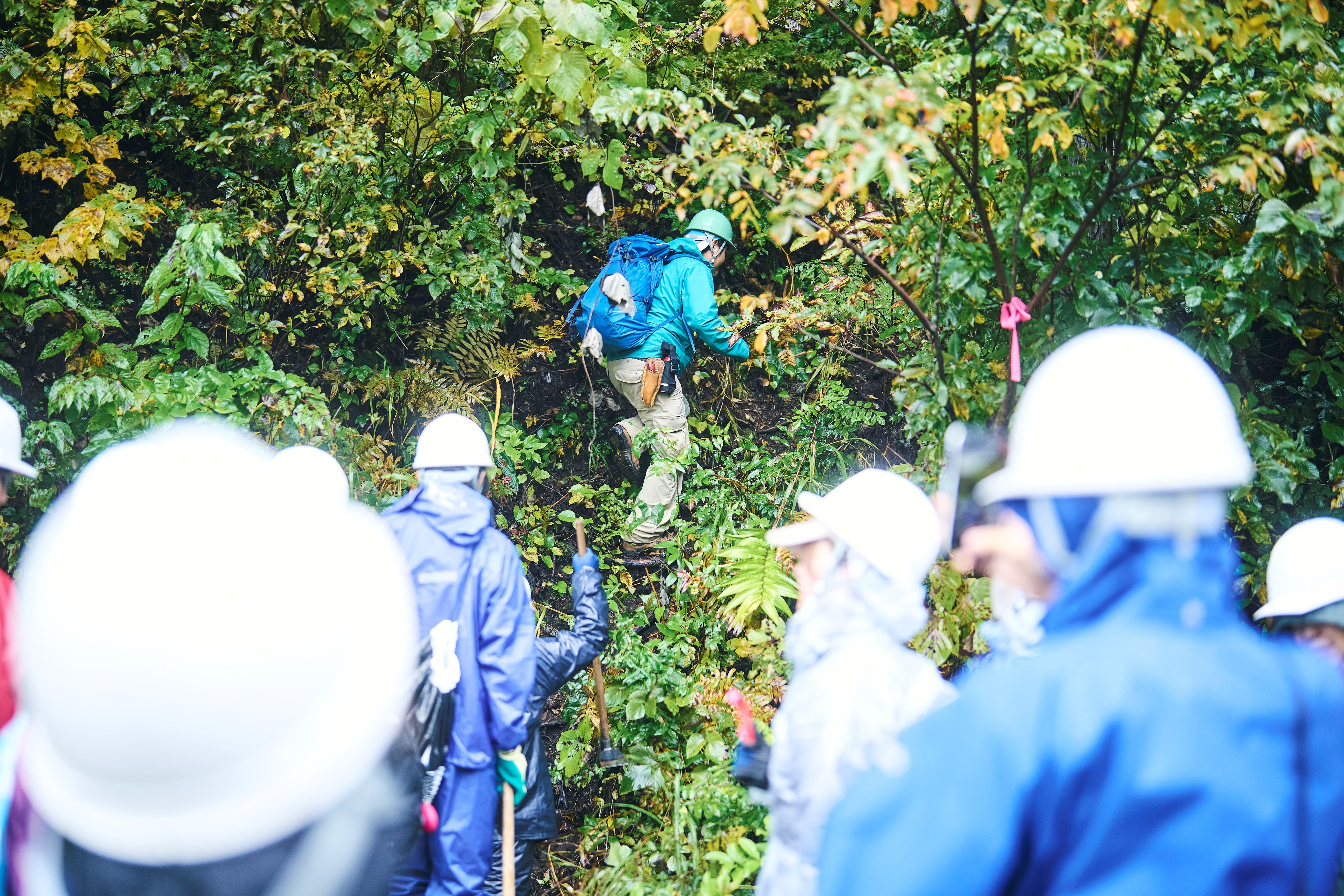
This is the entrance to the Kazura ancient path, situated near the UNESCO World Heritage site of Shirakawa’s Gassho-style (thatched roof) villages in Gifu Prefecture.
Every year, snowfall causes the mountain paths to crumble, necessitating maintenance work on the old paths. This is an essential task in heavy snow areas.
The maintenance is part of an educational program called the SDGs Leader Development Program. Toyota’s Corporate Citizenship Division and Toyota Shirakawa-Go Eco-Institute are advancing this together with the villagers of Shirakawa.
First, let’s find out about the Toyota Shirakawa-Go Eco-Institute.
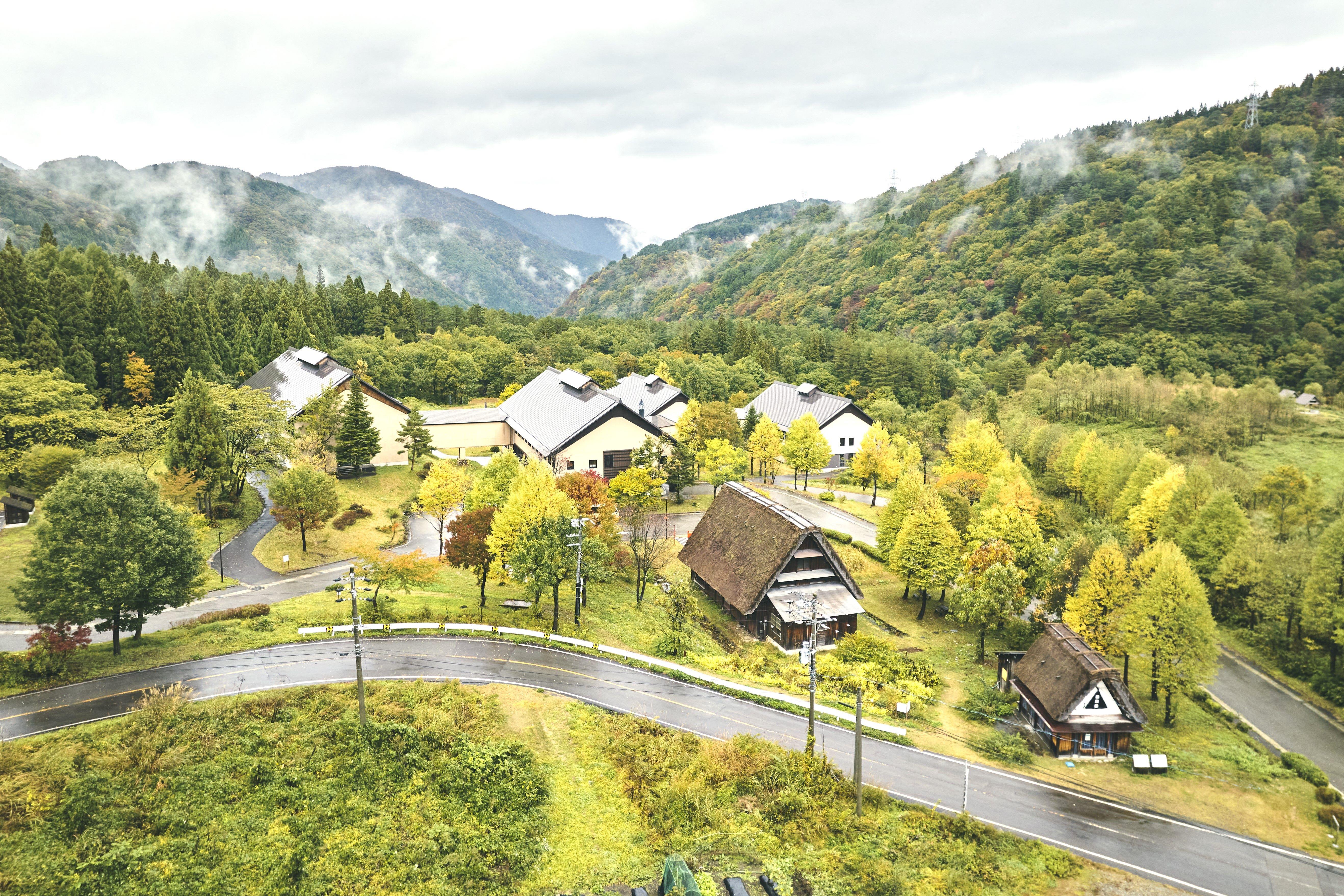
Although it’s called an “institute,” there aren’t any students in the traditional sense, nor are there entrance or graduation ceremonies. It is an “experiential accommodation facility” where anyone can stay, and it’s also a hot spring facility owned by Toyota.
Opened in 2005, it is astonishingly vast: approximately 37 times the size of Tokyo Dome*. But why does Toyota own a nature school in Shirakawa Village?
*37 Tokyo Domes is approximately 1.72 km².
Toshiyuki Yamada, Director,
Toyota Shirakawa-Go Eco-Institute
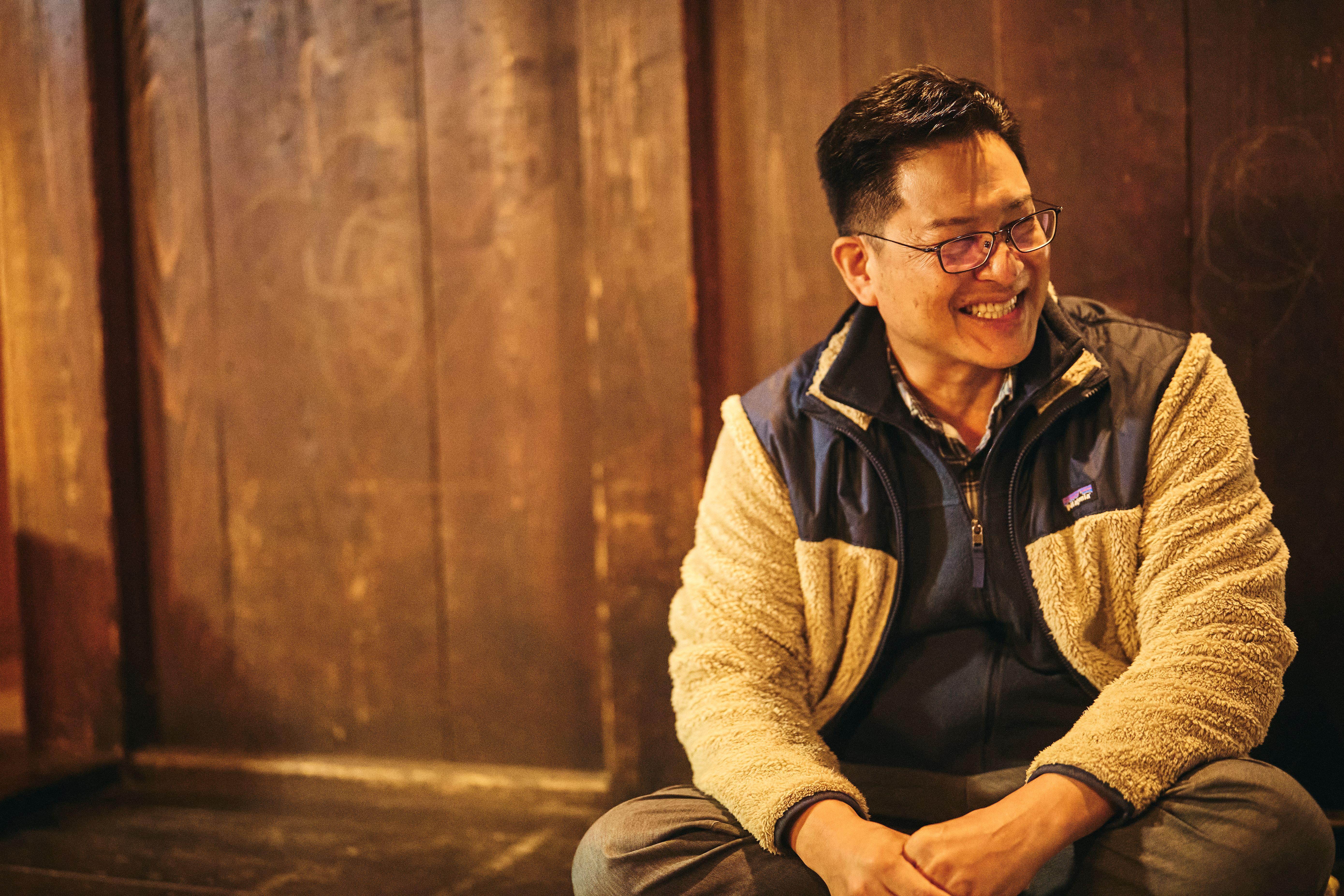
This land was once home to a quaint village, which became deserted because of severe snowfalls.
At that time, the then-mayor of Shirakawa Village was friends with Toyota’s Honorary Chairman, the late Shoichiro Toyoda. In 1973, Toyota bought the Magari area, covering the costs of the remaining residents to depart from the village. Afterward, Toyota purchased the remaining seven Gassho-style houses for use as employee recreational facilities.
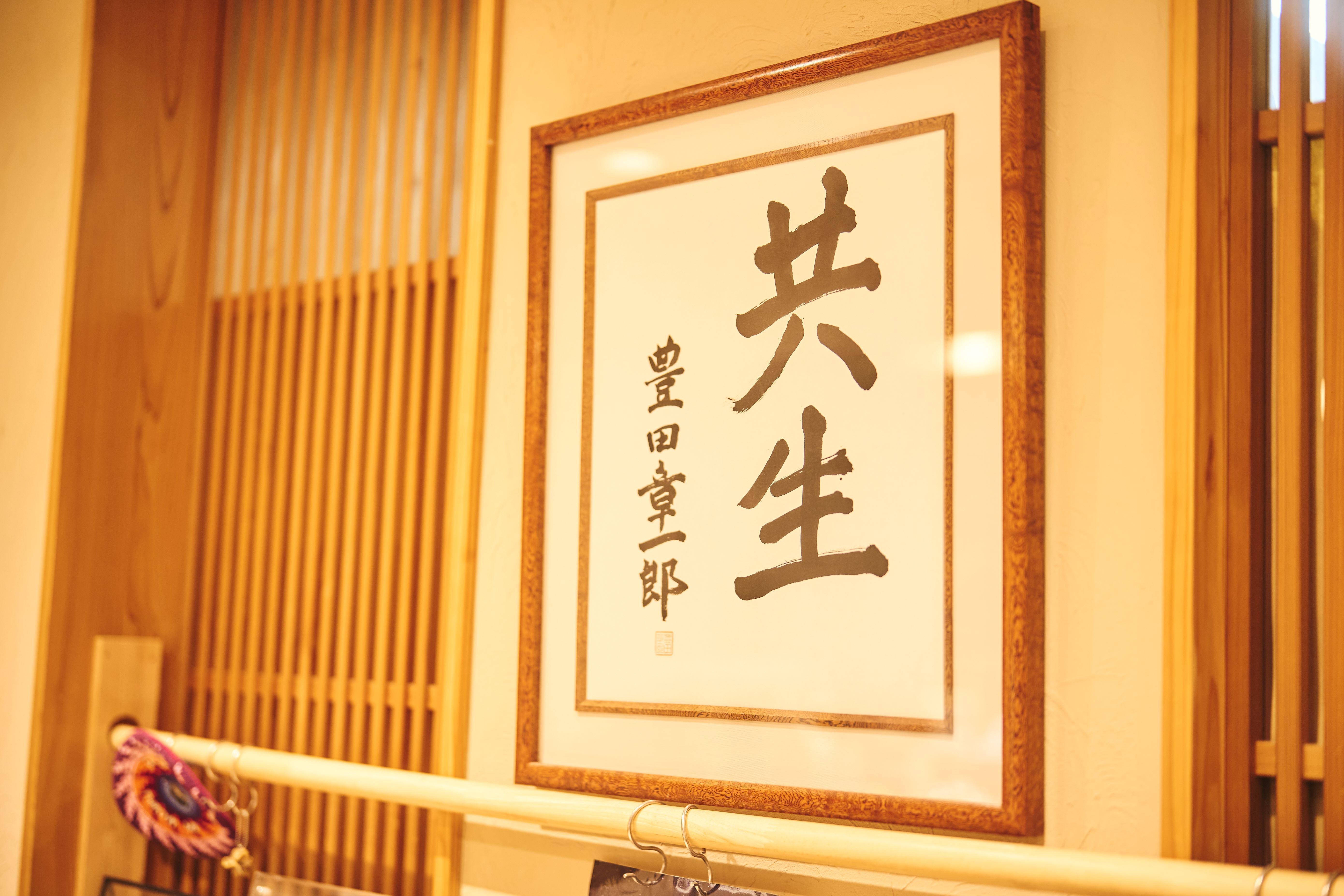
However, in 1980, a heavy snowfall of 8 meters hit the area, destroying all but one of the existing houses. The surviving recreational facility was closed and left unattended for nearly 20 years.
However, the tide turned in 1997.
Toshiyuki Yamada,
Director, Toyota Shirakawa-Go Eco-Institute
The Kyoto Protocol, a global environmental agreement, was established to set goals and raise awareness regarding climate change. The mayor of Shirakawa Village, who had been promoting an Eco-Village concept, approached us to see if we could use the abandoned recreational facility effectively.
In 1997, we opened the nature institute to coincide with Toyota’s launch of the Prius, the world’s first mass-produced hybrid car.
The school’s catchphrase is “Wild and Smile” (Let’s go outside on sunny days). The theme is to have children thoroughly enjoy themselves as well as to rejuvenate adults.
Dedicated interpreters and guides host various programs aiming to cultivate future talent in sustainability.
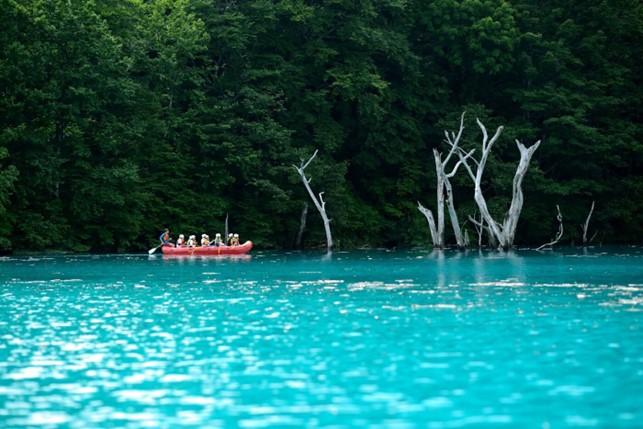
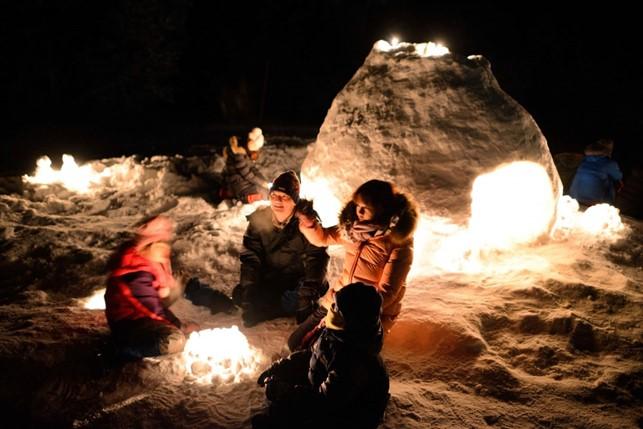
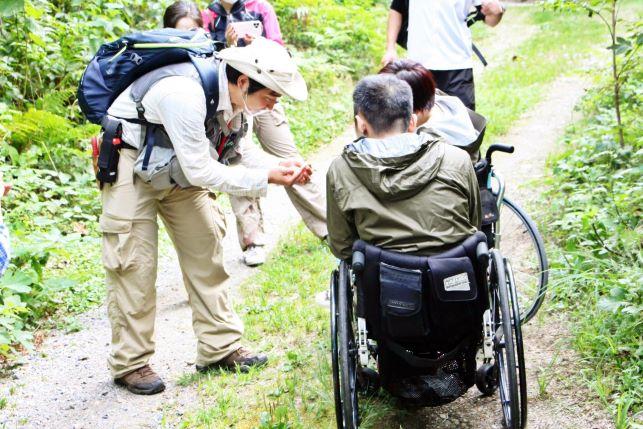
But why Toyota?
For the past three years, about 20 students have been participating annually in the “SDGs Leader Development Program” at this experiential accommodation facility for both children and adults.
The theme is aiming to become professionals in creating a society where everyone can experience well-being while co-existing with nature.
But why Toyota? Hiroki Kubota, a professional partner in the Corporate Citizenship Division, explains.
Hiroki Kubota, Professional Partner,
Social Harmony Group, Social Inclusion Dept.
Corporate Citizenship Div.
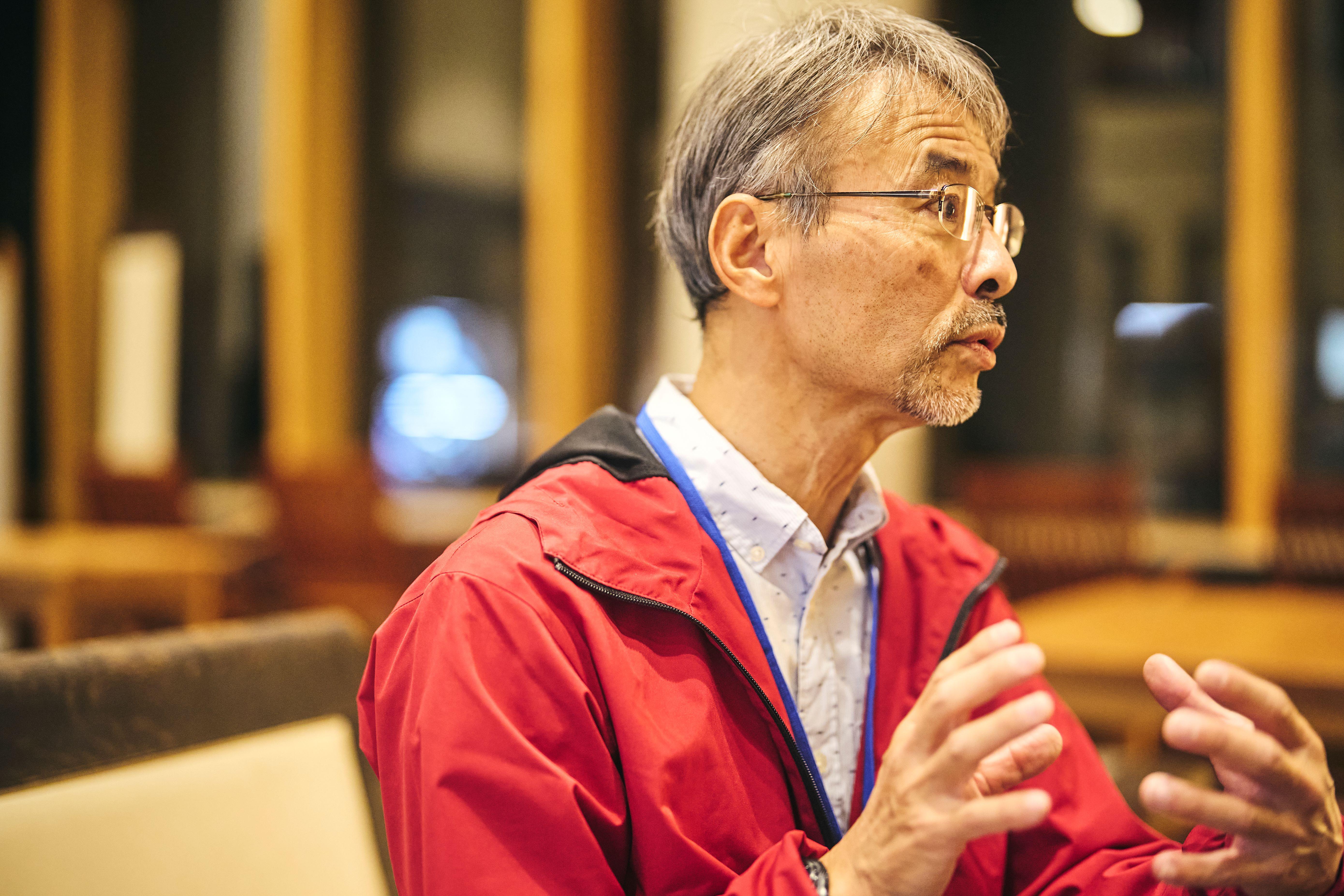
The crises in modern society can also be seen as the accumulation of humanity’s choices.
That’s why when each individual makes a choice, having the perspective of choosing something even slightly better for the environment and society is indispensable for creating a well-being society.
Moreover, it’s urgent to cultivate people who are interested in social challenges that hinder this and who can take the initiative in solving them.
What we want to deliver to the younger generation, who will navigate the future, is the significance of immersing themselves in the vast nature of Shirakawa-go. By coming in touch with the wisdom of life and realizing the importance of not just learning, they will also experience through all five senses and come to value interactions.
When initiating action, the presence of empathetic peers can lead to outcomes that surpass expectations. We are currently collaborating with students to develop a program that harnesses this potential.
In addition to the ancient path maintenance explained in the beginning, various programs are organized, such as night hikes in the pitch-dark forest without lights and events where guests and peers hold discussions around a campfire.
Participant Takuma Yanagihara says, “I joined to have various experiences during my student years. I want to help contribute and revitalize the community.”
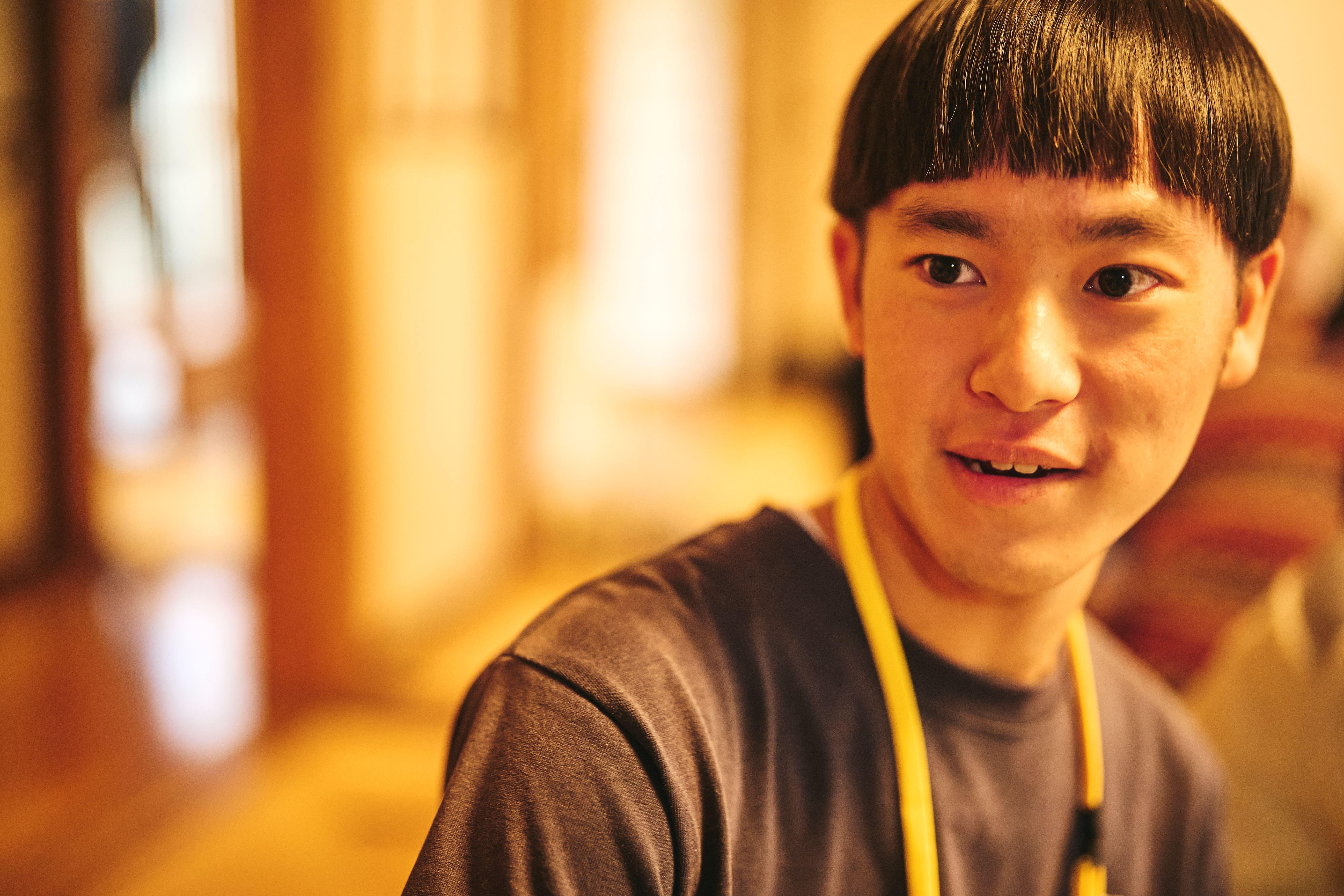
A curious remark emerged from another member: “It’s easy to make friends on social media. But…”

